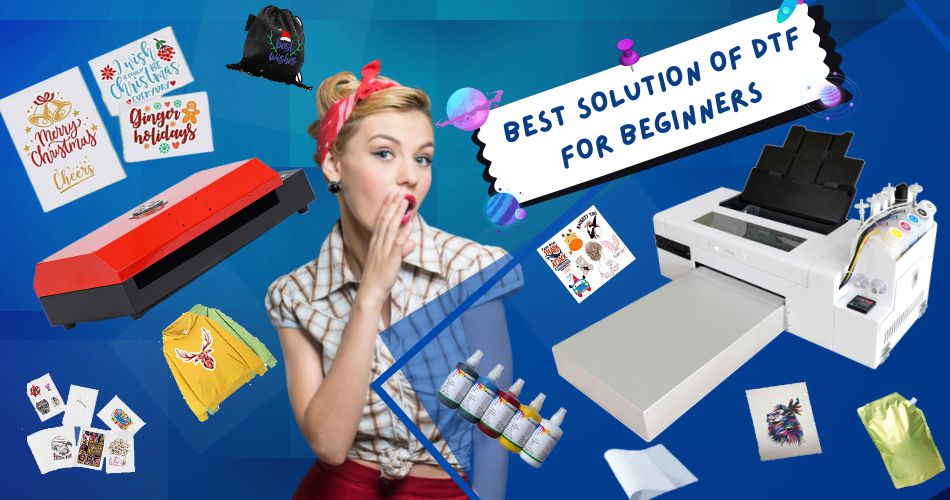Knowleages
Although DTF (Direct to Film) has been around for some time, its use is only now starting to proliferate.
The DTF printing option may not be intuitive to use at first, but it is not difficult to understand once you have the necessary knowledge.
Here are Some points to help you comprehend how to produce quality work better.

1) SELECT QUALITY DTF EQUIPMENT PIECES
It is crucial to understand that the higher the quality of your equipment, the higher the quality of your work and output will be for any printing enterprise you do.
Starting with your DTF ink and ending with your DTF ink and paper. DTF powder glue, a DTF transfer printer, and other instruments required to be of high quality. It's crucial to use high-quality DTF ink to prevent printhead clogging. As a result, choosing inks designed specifically for direct-to-film printing is highly advised.
Make sure to examine the quality of your DTF powder adhesive as well so that your finished product may boast of durability and soft transfer feeling. There won't be a bad scent either, just an excellent storage alternative. Soltoprint printer is a reliable suggestion for a DTF transfer printing device. To draw in more customers, invest in high-quality supplies for your DTF printing. Soltoprint is also your best choice.
2) USE OF DTF FILM
A DTF film can only be used once. If you have several uses for your DTF film as a beginning, scrap that notion. This is so that once DTF film has been used, it cannot be used again. The DTF film has a coating, and when you print and use it for the first time, it will no longer be effective. This coating is a fundamental element that affects the level of ink absorption and the final printing's quality. If you attempt to reuse it once more, the ink will continue to trickle off rather than adhere to the clothing. On the film, you could print all the patterns at once, then cut the ones you wanted to transfer.
3) DTG INK SHOULD NOT BE SUBSTITUTED OF DTF INK.
You might be curious as to whether DTG ink can be used with DTF printers. Don't waste your time or money trying this because the results won't be good or satisfactory. Because the chemical compositions of the two inks are different, you cannot use a DTG ink on a DTF printer. Since DTF inks are water-based, only heating will cause their formulation to interact with DTF film and powder.
4) FRAGILE DTF DRYER YOU OWN
Handle the DTF dryer carefully because it is brittle and easily breaks. The heating light is the dryer's most delicate component, and if it malfunctions, the appliance is difficult to use. Make sure you follow the manufacturer's instructions and take all required safety measures. Make sure the voltage in the workplace is safe to work with and always verify the voltage of the powder shaker. Overheating of the lamp can be brought on by the heating lamp reaching extreme temperatures. When the heating lamp is damaged, the power contact for the heating element will have poor connections and disconnections.
As a result, we highly recommend the DTF OVEN from SOLTOPRINT, which is of outstanding quality and has passed the test of numerous users. It comes with a guaranteed after-sales guarantee, so you can use it without concern.
5) CHOOSE THE RIGHT PHOTO RESOLUTION
The ability to embrace photography's usage and beauty is one of the best things about DTF printing. However it's crucial to remember that working with a high resolution while printing is one approach to make the beauty of your photography artwork come out beautifully on DTF printing.
Raster images like photographs require a higher resolution, such 300 DPI, to be created in order to produce prints of the highest quality. But, if you plan to use the artwork in numerous areas with various sizes, you might start by creating a layout that is the size of the market before scaling it down for smaller uses. Pictures with a low quality work well for site designs and are usually 720DPI.